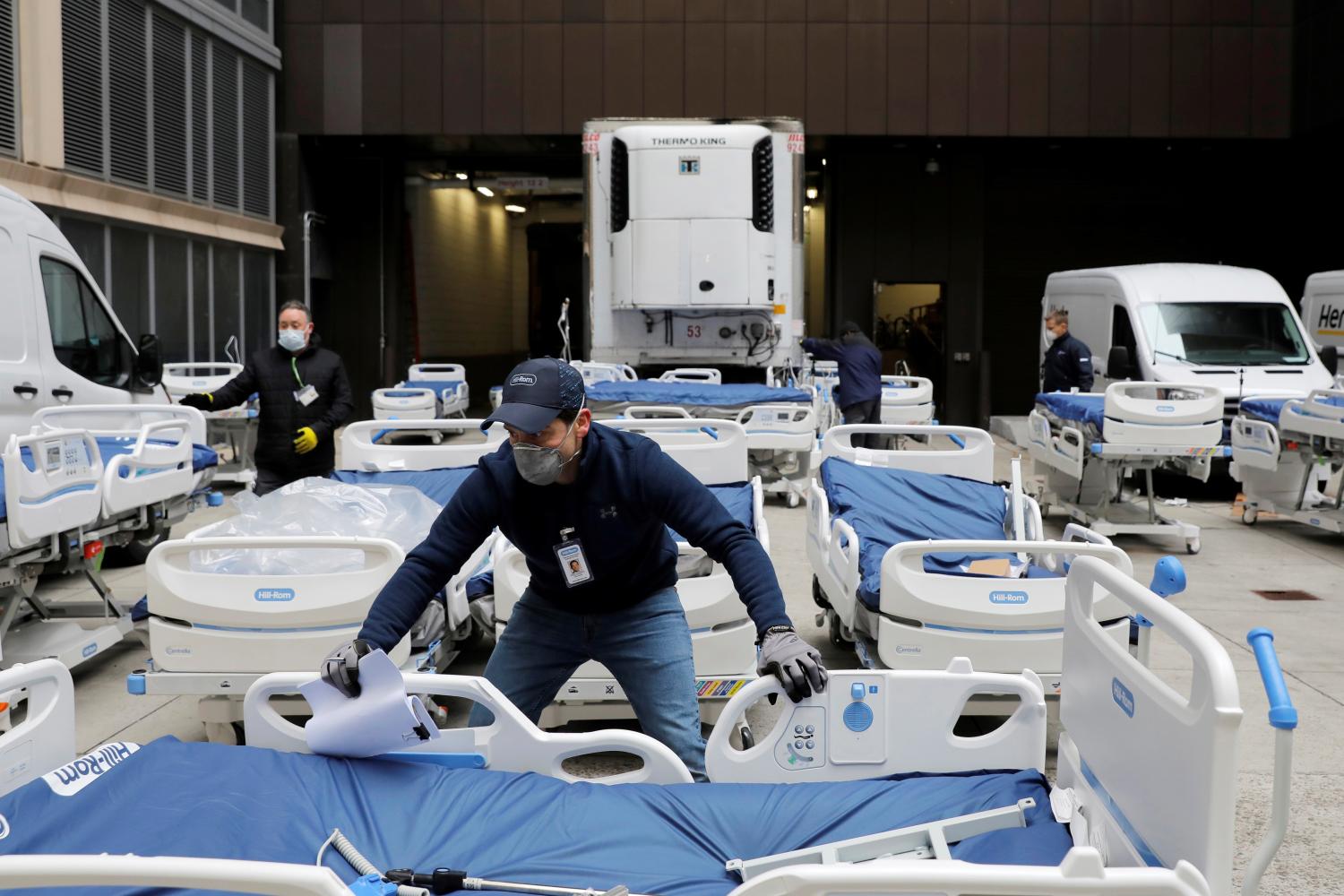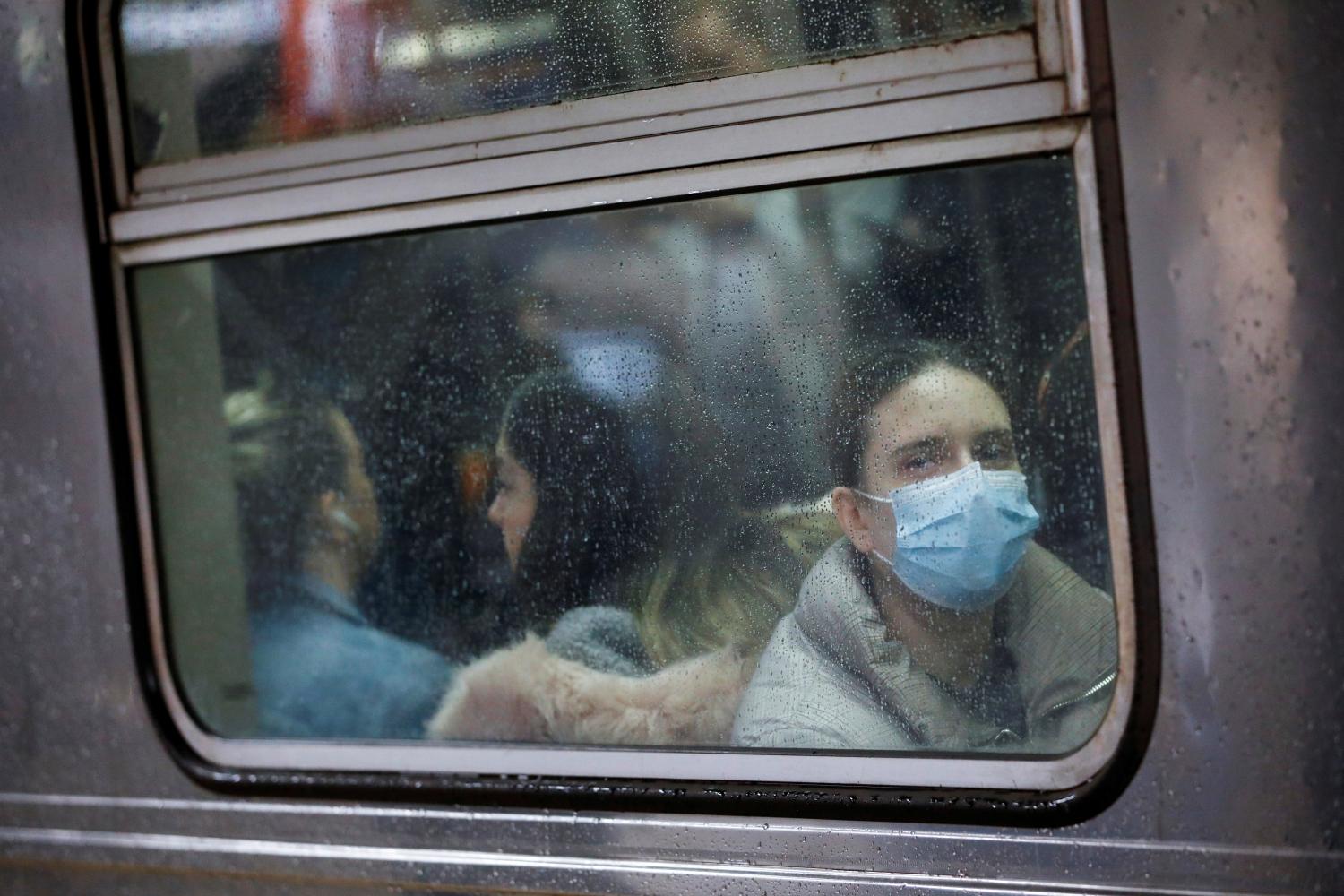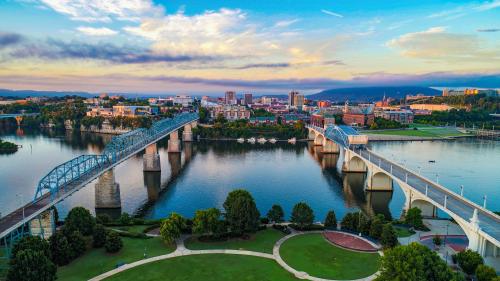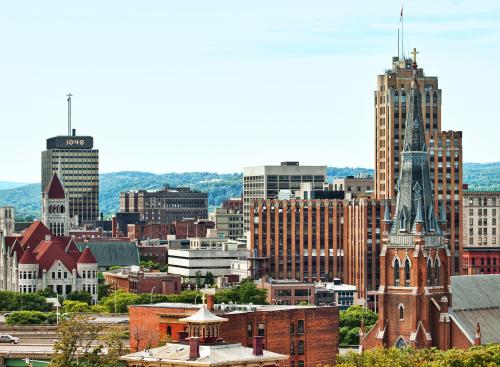Summary
Even with COVID-19 requiring social distancing for the weeks or months to come, the United States still requires an enormous class of workers to keep essential services online. The Department of Homeland Security uses a sweeping definition of such essential industries, which collectively employed anywhere from 49 to 62 million workers prior to the COVID-19 outbreak according to our highest estimates. Many of these essential industries will see continued demand for their products and services, the inverse of other industries that cannot operate during a period of social distancing.
A portion of these essential workers will continue to report to their jobs at health care facilities, grocery stores, water utilities, and other work sites—all to ensure the rest of the country can maintain some semblance of a typical life during this health crisis. Yet many of the same workers were already at an economic disadvantage—generally earning lower wages and carrying less health-related insurance—before the crisis hit. In other words, it’s not just the total number of jobs that matters, but a better understanding of who these workers are and the risks they face.
Since many of these workers risk their lives to protect ours, the nation has a responsibility to protect the health and financial stability of these individuals and their families. Critically, Congress did too little to protect essential workers in the CARES Act. We propose a two-part federal policy response, to be carried out over a defined period, to fulfill this responsibility:
- Provide a single $50,000 cash benefit to the spouse and dependents of any essential worker who dies from COVID-19.
- Enroll any uninsured essential worker, their spouse, and their dependents in a new Medicare-COVID program, which would narrowly reimburse all COVID-19-related testing, hospital care, and future vaccinations. Essential workers with private insurance would receive federal reimbursement for any similar out-of-pocket expenses.
Introduction
COVID-19 is a genuine shock to daily life. Typical activities—sitting down at a restaurant, meeting with colleagues, hugging a friend—are suddenly foreign and deeply missed. From coast to coast, mayors and governors have wisely recommended residents to keep physically apart, all to minimize a massive wave of infections and give our health care systems a chance to mitigate the virus.
The early result is a massive economic seizure among certain industries and their workforces. Early numbers show millions of layoffs spread across food retail, shopping, tourism, and intercity travel industries. In tandem with the unfolding health emergency, the economic crisis is now perpetually the country’s top story. As a result, congressional, state, and local leaders are aggressively pursuing policies to support these workers and their employers in these tumultuous times, including the $2 trillion CARES Act.
While millions of people are laid off, another set of individuals work in industries that the nation collectively asks to not slow down. These essential workers, based on Department of Homeland Security-designated industries, ensure that the hundreds of millions of people under social distancing or shelter-in-place orders can continue to live their lives. They ensure food is on grocery store shelves, clean water comes out of the faucet, the lights turn on, the trash gets picked up, and—critically—we continue to get the health care we need. And among workers deemed essential, those who must report to a work site do all this knowing they cannot social distance, putting their own lives at risk in the process.
As the federal government continues to adopt programs that build on the first emergency spending package, the Families First Coronavirus Response Act, and the CARES Act, there is an enormous responsibility to take care of the workers who must continue to work outside the home. The country should consider COVID-19-related essential workers akin to active duty military personnel and offer a benefits package that reflects their heightened duties and risks.
Defining COVID-19-related essential workers
Responding to a March 16 executive order signed by President Trump, the Department of Homeland Security (DHS) designated a list of essential infrastructure workers who “protect their communities, while ensuring continuity of functions critical to public health and safety, as well as economic and national security.” The advisory list (it is not a federal directive, nor does it include specific occupation codes) covers workers in a broad array of industries.
To get a sense of just how many workers could be impacted, we related the qualitative information in the DHS list to specific industry codes. While it can be statistically difficult to isolate essential workers in these industries, we aimed to define a range of possible employment totals (see the downloadable appendix). Our expectation is that most support staff in these essential industries will continue to work during the COVID-19 pandemic, but it’s hard to gauge exactly how many workers fall into this category. For example, hospitals will not just rely on doctors and nurses—cleaning staff, cooks, and others are still necessary to keep the hospital functional. Local governments will also need police officers and firefighters to keep working, alongside administrative and maintenance workers. Given all this uncertainty, and recognizing that an increasing number of cities and states under lockdown have developed their own definitions of who is essential, we chose to quantify essential workers by the broadest potential range of total industry employment.
These DHS-designated industries employed anywhere from 49 million to 62 million people in 2018, according to the Bureau of Labor Statistics (BLS), representing about 34% to 43% of the total U.S. workforce.1 This is a staggering share of all workers, confirming the sheer scale necessary to keep us safe and economically resilient during a pandemic. And while some of these workers earn competitive wages, many are employed in industries that pay below the national median ($18.58 per hour), ranging from food and beverage stores to nursing care facilities.

However, just because DHS designates an industry as essential does not mean every worker must commute to a job site. Broadband capabilities mean employers and employees are testing new boundaries around working and collaborating from home, keeping operations active while eliminating the threat from unnecessary exposure to other people. Of course, people living in the 32 million households without adequate in-home broadband will not be able to telework in the same way.
The issue is further complicated by varying “essential” designations at the state and local level. Since the DHS designation is only meant to inform, governors and mayors are now making their own designations. This has led to confusion even within the same states over what establishments can and should stay open.
Nor is there any guarantee that DHS-designated essential industries will continue to see the demand to stay open or keep their workers employed. Retail food service is caught in a challenging spot, since people cannot eat out, but many still want to order takeout meals from restaurants. Even local governments who rely on sales taxes and other direct payments to fund operations may have to consider layoffs.
Still, the sheer scale of industries and workers deemed essential by DHS means every region could see a sizable portion of their labor force continue to work—and potentially commute to work—during the pandemic. Across the 192 metro areas whose populations exceed 250,000, the lowest essential worker share is in Huntsville, Ala. (18.6%), while Charleston, W.Va. has the highest (45.7%). The size of essential industries especially jumps out in the largest metro areas—there are over a million or more DHS-designated essential workers in New York, Los Angeles, Chicago, Dallas, Philadelphia, and Houston. If even a minority of these workers continues to travel to work each day, it will create a threat for COVID-19’s spread.

Data also confirms that for DHS-designated essential workers who are unable to telework, simply showing up to work will put them at risk. Looking at 15 selected occupations found across the DHS categories, it’s clear that many of these workers are in close physical proximity to others, exposed to disease and infections, and have frequent face-to-face interactions.

Of DHS’s list of essential workers, health care practitioners and support workers face the greatest levels of exposure. On average, 85% of these workers are frequently in close proximity to others, 79% are frequently exposed to disease, and 89% have frequent face-to-face interactions. It’s harder to precisely measure the risks that workers face in grocery stores, trade and logistics, and other establishments, but it’s clear that many could potentially be exposed to COVID-19 and will require closer monitoring.
Essential workers are not equally prepared for personal health impacts
Even as tens of millions of people could be exposed to COVID-19 in their workplace, not all DHS-categorized essential workers are equally prepared to manage coronavirus-related health impacts in their own lives. Income levels, health care benefits, and life insurance rates vary considerably across this wide set of workers.
Although millions of nurses, therapists, and health care practitioners are earning higher wages, millions of other essential workers do not. From home health aides to packagers, some of the largest occupations in DHS’s list are not only exposed to hazards on the job, but they also earn much less than the country’s median wage ($18.58 per hour). Nearly two-thirds of workers earning wages below the national median must be in close physical proximity to others in order to perform their jobs. By comparison, only 45% of workers earning wages above the national median must be in close physical proximity to others. Disease exposure also tends to be higher for lower-wage workers.

Food preparation workers (median $11.41 per hour), stock clerks ($12.36), and physical therapist aides ($12.62) are among the lowest-paid and most vulnerable workers found across several DHS-designated essential industries. Low-wage workers are vulnerable to economic risks in general, but it’s clear that many are vulnerable to considerable health risks too.

Many workers within DHS’s list of essential industries are also unlikely to carry health or life insurance. Roughly 12% of workers in these industries do not have public or private medical insurance, leaving them, their spouses, and their dependents exposed to substantial medical expenses if they require COVID-19-related medical service. The lowest-earning occupations within these industries are even more likely to be uninsured, making them especially vulnerable to high medical bills. Equally troubling is that only about 60% of all households owned life insurance, with research showing lower ownership rates among lower-earning households.

All told, many people in DHS’s list of essential workers face an impossible choice. The country needs their professional services during this time of collective response—but continuing to work or commute if it is required could cause irreparable physical and financial harm to them and their families.
A new platform to protect essential workers
The federal government has a moral and economic responsibility to protect essential workers during the COVID-19 pandemic—particularly those that must continue to work outside the home. Morally, it’s unconscionable to ask people to show up for work, knowing they will put themselves and their loved ones at greater risk, and offer no benefit for their public service. Economically, it’s imperative that certain essential workers continue to work or report to their workplaces if they can’t telework, so the entire economy does not shrink even further.
Much like a wartime economy, this unique situation calls for the federal government to create a short-term social contract with the essential workforce. This social contract should recognize three fundamental truths:
- Many essential workers are more likely to get sick or die due to their service, so there is a need to protect their family’s financial future; and
- Many essential workers are more likely to contract COVID-19 due to activities at the job site and traveling to it, so there is a need to keep the worker and their families healthy; and
- Many essential workers face new hazardous duties, so there is a need to compensate workers for their exposure to COVID-19 and incentivize their continued work within essential industries.
We recommend the federal government use established programs as models to serve the needs of the essential workforce during the pandemic.
First, the Department of Defense’s Death Gratuity program can be a model for a new life insurance program for qualifying essential workers. The program provides “a one-time lump sum Death Gratuity of $100,000 to the primary next of kin of a Service member who dies while on active duty.” A new COVID-19 Death Gratuity program would automatically insure any essential worker who dies due to COVID-19-related causes. The new program could provide a $50,000 lump sum to those essential workers with a surviving spouse, dependent children, or parents. The lump sum would be available to any essential worker who works outside the home, regardless of any private life insurance coverage, and would not impact other federal programs such as the Social Security Administration’s survivor benefit.
Second, Medicare’s approach to COVID-19 treatment can model a targeted health insurance program to qualifying essential workers. Every Medicare beneficiary would receive full coverage for all COVID-19 testing, hospitalizations, and future vaccines, with some supplemental plans covering all other costs. A new Medicare-COVID-19 program should automatically permit any uninsured essential worker who works outside the home to receive the same level of care without any out-of-pocket expenses. The federal government should also cover any shared costs for essential workers who are privately insured. New laws should preclude private insurers from amending their current coverage and reimbursement rates, ensuring no additional cost burden shifts to the federal government.
By adding benefits to their current work arrangements, these two programs will raise the effective wages of the most exposed essential workers. They will also create an additional incentive to continue working during this period of heightened demand. There is also an argument to add a hazard pay program, although it would be challenging to simultaneously cap the net cash transfers to employees, administer the program, and control fraud and waste.
Administering and funding these policies
Like other major COVID-19 actions, the federal government will need to take multiple steps to administer these new programs.
Congress will need to enact legislation that authorizes and creates available funding for these programs. Since there is no clarity around how long COVID-19’s high-risk period will last or the exact number of qualified workers, the cost of these programs is unknown. However, we can make a few estimates.
- COVID-19 models estimate total U.S. fatalities ranging from 1.1 to 2.2 million people in the worst scenarios, equaling a 0.3% to 0.6% fatality rate across the nation’s 330 million residents. While the death rate will likely be higher among older Americans, we can conservatively apply that rate to the total number of DHS-defined essential workers: about 125,000 to 250,000 deaths. Ignoring administrative costs, the total COVID-19 Death Gratuity program would cost roughly $6 to $13 billion. Of course, since many essential workers can telework and reduce their exposure to the coronavirus, these totals represent a ceiling.
- The Kaiser Family Foundation compares COVID-19 treatment costs to hospital admissions for pneumonia. The average cost of pneumonia treatment can range from about $10,000 to $20,000, often leaving $1,300 or more in out-of-pocket costs. Of course, costs could be much lower for individuals with minimal symptoms. If 20% of all workers defined as essential by DHS are infected, it could lead to roughly 1 million hospitalizations (or 12% of infected individuals). If we assume 70% of these workers have private insurance, their out-of-pocket medical costs may total about $1 billion, with smaller costs for the roughly 18% of DHS’s essential workers with public insurance. Hospitalization for the 12% of DHS’s essential workers who are uninsured could cost about $2.5 billion. All those numbers would scale depending on hospitalization rates for essential workers’ spouses and dependents, and also represent a ceiling since some essential workers may no longer work outside their home.
Equally important is a formal, consistent designation of essential industries and a method for all employers to confirm specific workers still reported to their job sites. DHS and the Department of Labor should be responsible for creating a formal list of industries (via NAICS codes) and occupations (via SOC codes) that qualify for the new programs, which is a gap in the CARES Act. There will also need to be a new control board that can collaborate across multiple federal agencies and local partners to verify qualifying businesses and all future claims. These would include verification of any employee working outside the home and the justification for why they could not telework.
Finally, Congress and federal executive agencies will need to allow flexible qualifiers to discontinue the programs. Distributing an effective, publicly available vaccine could qualify. Congress could create defined funding levels under each program, setting automatic terminations once the programs spend all their resources. Congress could also set a firm date to discontinue services, in case the medical community does not discover a vaccine or other treatments within a defined time period.
Conclusion
Protecting public health and the economy during the COVID-19 pandemic demands that residents stay as far away from each other as possible. Yet to make this collective response possible, tens of millions of people must continue to work, often outside the home. The country has a moral responsibility to protect these worker’s health, to create financial security for their loved ones, and to offer peace of mind during a time of heightened physical and emotional stress. Providing free life and health insurance to essential workers who must leave their homes to continue working is an honorable and affordable policy.
-
Footnotes
- The variation is mostly due to questionable manufacturing, financial, and wholesale industries.
The Brookings Institution is committed to quality, independence, and impact.
We are supported by a diverse array of funders. In line with our values and policies, each Brookings publication represents the sole views of its author(s).








